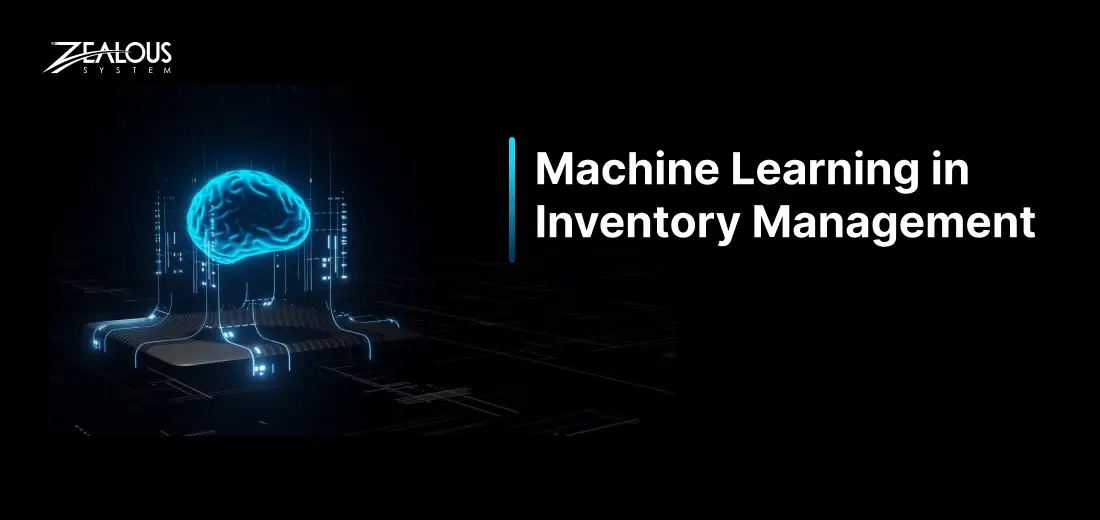
- Company
- Services
- UI/UX Design Services
- Microsoft Dynamics 365
- Mobile App Development
- AI Software Development
- Web App Development
- Generative AI Development
- Digital Product Development
- Enterprise Mobility
- SaaS Application Development
- Application Integration
- White-label WP Maintenance
- ERP Software Solutions
- Software Testing
- Offshore Development Center
- Let’s Connect
- Trending
- Technology
- Industry
- Build Your Team
- Our Work
- Company
- Services
- UI/UX Design Services
- Microsoft Dynamics 365
- Mobile App Development
- AI Software Development
- Web App Development
- Generative AI Development
- Digital Product Development
- Enterprise Mobility
- SaaS Application Development
- Application Integration
- White-label WP Maintenance
- ERP Software Solutions
- Software Testing
- Offshore Development Center
- Let’s Connect
- Trending
- Technology
- Industry
- Build Your Team
- Our Work
We use cookies and similar technologies that are necessary to operate the website. Additional cookies are used to perform analysis of website usage. please read our Privacy Policy
How Machine Learning Shapes the Future of Inventory Management?

The traditional methods that served businesses for decades are struggling to keep pace with the complexities of global supply chains, changing market dynamics, and shifting consumer demands. This is where machine learning, a powerful subset of artificial intelligence, steps into the spotlight.
Inventory management, once reliant on manual and rule-based methods, is now being reimagined through the lens of data-driven intelligence. The advent of machine learning algorithms is making it possible to process vast amounts of data and predict demand patterns, ultimately leading to better inventory control.
In this blog, we dive into the impact of machine learning on the future of inventory management, exploring its key benefits and real-world applications that are reshaping the landscape of business logistics.
The State of Inventory Management Today
Old-school inventory management practices, relying on manual and rule-based approaches, are falling short in today’s complex business environment. They can’t keep up with shifting customer preferences, market changes, and global supply chains. This often leads to inefficiencies, overstock, or dreaded stockouts.
Machine Learning’s Role in Inventory Management
Machine learning, a subset of artificial intelligence, is leading the charge in transforming inventory management. At its core, machine learning uses algorithms to analyze extensive datasets, learn from them, and make predictions or decisions based on this learning. In the inventory context, it continuously processes data on sales, demand, supplier performance, and more, leading to more accurate predictions and optimized inventory levels.
5 Key Benefits of Machine Learning in Inventory Management
1. Enhanced Accuracy
One of the most significant advantages of integrating machine learning into inventory management is the substantial improvement in accuracy. Machine learning algorithms excel at analyzing vast datasets and identifying patterns and trends. This means that inventory managers can make more precise demand forecasts, leading to a significant reduction in overstock and stockout situations.
Traditional inventory management methods often rely on fixed rules and historical data, which can be inadequate for predicting changes in demand patterns. Machine learning, on the other hand, adapts and learns from current data, resulting in more accurate predictions.
2. Reduced Costs
Cost optimization is a central goal of inventory management software, and machine learning plays a pivotal role in achieving this objective. By accurately predicting demand and optimizing inventory levels, machine learning helps businesses allocate their resources more efficiently. This leads to significant cost savings in terms of carrying and storing inventory.
Over time, these cost savings can have a substantial impact on a company’s bottom line. It frees up capital that would otherwise be tied up in excess inventory and allows businesses to invest in growth, research and development, or other strategic initiatives. Machine learning’s ability to reduce waste and optimize stock levels results in a more efficient and profitable operation.
3. Improved Decision-Making
Machine learning empowers businesses to make better decisions across the entire inventory management process. With the ability to adapt to changing demand patterns and market conditions, companies can respond more effectively and proactively to emerging trends. This capability provides a competitive advantage, allowing businesses to stay agile and responsive in a rapidly evolving business environment.
By providing real-time insights into inventory status, supply chain performance, and demand forecasts, machine learning equips decision-makers with the information they need to make informed choices. It streamlines the decision-making process, allowing businesses to react swiftly to opportunities or challenges and adjust inventory strategies accordingly.
4. Predictive Maintenance
Machine learning is not limited to inventory management; it extends its benefits to equipment maintenance. In industries reliant on machinery and equipment, such as manufacturing and logistics, machine learning can predict maintenance needs with remarkable accuracy.
By analyzing data from sensors and equipment, machine learning algorithms can identify patterns that indicate when maintenance is necessary. This predictive maintenance approach minimizes downtime due to unexpected breakdowns and reduces the costs associated with reactive maintenance. As a result, businesses can maintain a smoother and more cost-effective production or distribution process.
5. Supply Chain Optimization
Machine learning’s impact on inventory management goes beyond the warehouse. It extends to the entire supply chain, from procurement to distribution. By analyzing various factors affecting the supply chain, machine learning helps businesses optimize the entire process.
It can identify the most efficient suppliers, routes, and delivery schedules, leading to cost reductions and enhanced supply chain performance. Supply chain optimization through machine learning can result in shorter lead times, reduced transportation costs, and a more agile and responsive supply chain.
Real-Life Success Stories ML for Inventory Management
Machine learning is already making waves in inventory management. Take Amazon, for instance. They employ machine learning to forecast demand and optimize the allocation of products in their vast network of warehouses. The result? Faster delivery and minimized storage costs.
Implementing Machine Learning in Your Inventory Management
Implementing machine learning in your inventory management processes can seem like a daunting task, but with the right approach and understanding, it becomes a feasible and highly beneficial endeavor. Below, we’ll guide you through the steps to successfully integrate machine learning into your inventory management system:
1. Define Your Objectives
Before diving into machine learning, you need to clearly define your objectives. What are you trying to achieve with machine learning in inventory management? Whether it’s to reduce overstock, prevent stockouts, optimize supply chains, or enhance demand forecasting, having specific goals in mind is crucial.
2. Assemble Your Data
Machine learning is data-dependent. You’ll need a robust dataset that includes historical inventory records, demand patterns, supplier performance, lead times, and any other relevant data. This data forms the foundation for your machine learning model.
Ensure data quality is a priority. Clean, accurate, and up-to-date data is essential for the success of your machine learning application.
3. Select the Right Machine Learning Tools
Choose the machine learning tools and software that align with your objectives and the complexity of your data. Commonly used machine learning libraries include TensorFlow, scikit-learn, and PyTorch. These tools offer a wide range of algorithms and models suitable for various inventory management tasks. If you are not aware of these tools, you can partner with an ML expert software development company or hire Python developer.
4. Data Preprocessing
Prepare your data for machine learning by conducting data preprocessing. This step involves tasks like data cleaning, transformation, and feature engineering. You may need to normalize or scale your data to ensure consistent inputs for your model.
5. Model Selection
Select the appropriate machine learning model for your inventory management task. Linear regression, decision trees, random forests, and neural networks are just a few examples. The choice depends on the complexity of your problem and the type of data you have.
6. Train Your Model
With your dataset and model in place, it’s time to train your machine learning model. This involves feeding your historical data into the model and allowing it to learn patterns and relationships. You’ll need to split your data into training and testing sets to evaluate your model’s performance.
7. Model Evaluation
Assess the performance of your machine learning model using metrics relevant to your inventory management objectives. For example, Mean Absolute Error (MAE) or Root Mean Squared Error (RMSE) can measure prediction accuracy. Precision, recall, and F1-score may be useful if you’re dealing with stockouts or overstock situations.
8. Fine-Tuning and Optimization
Your initial model may require fine-tuning to achieve optimal performance. This can involve adjusting hyperparameters, refining feature selection, or employing more advanced techniques like ensemble learning.
9. Integration with Your System
Once your machine learning model is trained and performing well, it’s time to integrate it into your inventory management system. This typically requires collaboration between data scientists, IT professionals, and domain experts within your organization.
Ensure that the model’s output aligns with your existing processes and can be easily incorporated into decision-making.
10. Continuous Monitoring and Maintenance
Machine learning models are not static; they require continuous monitoring and maintenance. Periodically retrain your model with new data to adapt to changing market conditions and demand patterns. Maintenance also includes fixing any issues that may arise, such as shifts in data distribution or model degradation.
The Future Outlook
The future of inventory management is inseparable from machine learning and artificial intelligence. Emerging technologies like the Internet of Things (IoT) create more data for optimization. As machine learning algorithms become more sophisticated, they’ll continue to shape the future of inventory management.
Conclusion
The journey doesn’t end with model training and implementation. Machine learning models require ongoing care and attention. Continuous monitoring, fine-tuning, and maintenance are essential to ensure that your model adapts to changing market conditions and remains a valuable asset to your business.
Ultimately, the benefits of machine learning in inventory management go beyond the technology itself. It translates into increased profitability, improved customer satisfaction, and a competitive edge in the market. As you take the first steps in implementing machine learning, remember that it’s not just about the technology; it’s about reshaping the future of your inventory management and, in turn, the future of your business.
We are here
Our team is always eager to know what you are looking for. Drop them a Hi!
Pranjal Mehta
Pranjal Mehta is the Managing Director of Zealous System, a leading software solutions provider. Having 10+ years of experience and clientele across the globe, he is always curious to stay ahead in the market by inculcating latest technologies and trends in Zealous.
Table of Contents
×

Comments